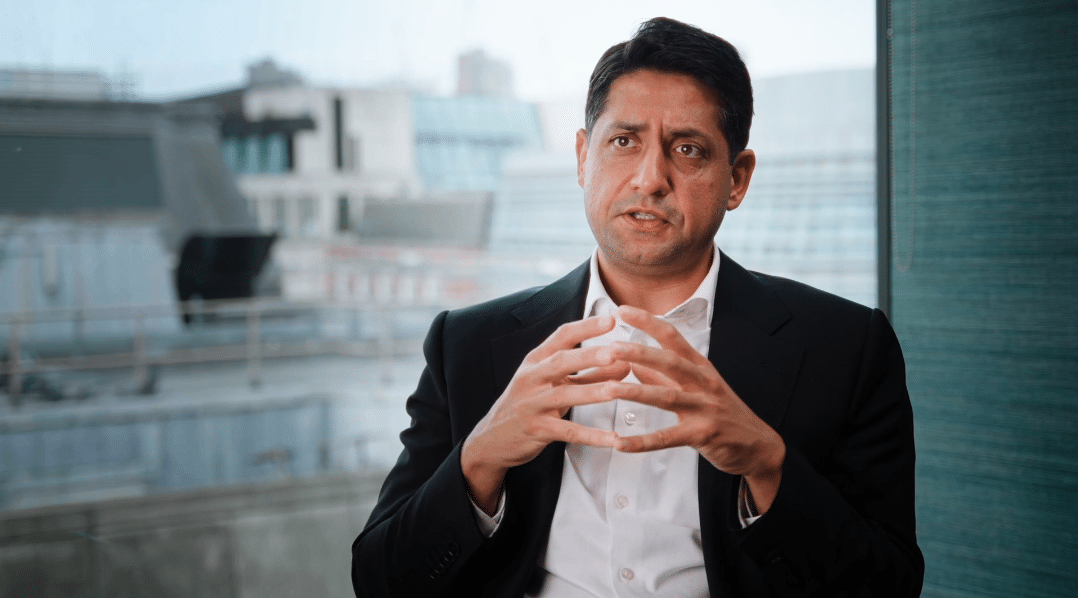Your complete guide to preserving family wealth for 2025/26
How high‑earning families and business owners can build and preserve wealth across generations – with practical steps you can take this tax year.
With inheritance tax (IHT) thresholds frozen until at least 2030 and new pension tax rules taking effect from 2027, many families are asking the same question:
“Do I need to leave the UK to protect my wealth?”
The good news: you don’t. There are multiple estate planning strategies available that can significantly reduce or even remove an eventual IHT liability – without changing your residency or lifestyle.
Read this 1-min snapshot first
If your total estate could exceed £500k+ as an individual, or £1m+ as a couple, you’re in inheritance tax (IHT) territory. If you’re around £2m+, decisions about lifetime gifts, trusts, business relief and pensions will materially alter your family’s eventual outcome. Here’s the fast path:
Write/Review your Will (and Letters of Wishes) and Lasting Powers of Attorney.
Map out your estate: assets, liabilities, how they’re owned (sole/ joint/ trust/ company), and your domicile/ residence status.
Use allowances today: £3,000 annual exemption, wedding/ civil ceremony gifts, small gifts, and – the most powerful – regular gifts out of surplus income.
Plan around the £2m threshold: keeping your estate below the Residence Nil-Rate Band (RNRB) taper can increase the tax‑free amount that passes with the family home.
Protect business and farm assets: review eligibility for Business Relief (BR)/ Agricultural Property Relief (APR), as well as the reforms to these reliefs from April 2026.
Re‑think pensions: with most pensions facing IHT from April 2027, adjust nominations, drawdown plans, and wrapper strategy to avoid double‑tax traps.
Fund the bill: if you can’t (or don’t want to) gift enough, consider whole‑of‑life insurance written in trust and pay premiums from surplus income.
Consider structures: trusts (bare/ IIP/ discretionary, loan trusts, discounted gift trusts) and Family Investment Companies (FICs) to control, protect and direct wealth.*
Charity: leave ≥10% of the net estate to charity to reduce IHT from 40% to 36%.
Keep records: gift logs, income vs expenditure evidence, trust paperwork, valuations, ownership statements, and a family “financial map”.
The levels and bases of taxation and reliefs from taxation can change at any time. Tax relief is dependent on individual circumstances.
Wills as well as Trusts are not regulated by the Financial Conduct Authority.
*Please note that advice in this area will necessitate the referral to a service that is separate and distinct to those offered by Apollo Private Wealth or St. James’s Place.
What’s changed and what’s coming
UK resident non‑domiciled individuals & IHT scope: from 6 April 2025, the UK has moved toward a residence‑based approach for IHT scope. Transitional rules may apply, and planning is essential if you have overseas assets.
Business & Agricultural Property Relief reforms: from 6 April 2026, BR/ APR will be modernised – including a £1m per‑person allowance at 100%, with only 50% relief above that, plus holding‑period and listing clarifications, and separate allowances for trusts/estates.
Pensions: from 6 April 2027, most unspent pensions are scheduled to be brought inside your estate and face IHT. This creates potential double tax alongside Income Tax on beneficiaries on the net proceeds.
With these major changes it is absolutely critical that you review your estate planning as soon as possible.
The levels and bases of taxation and reliefs from taxation can change at any time. Tax relief is dependent on individual circumstances.
Arrange your no-obligation estate planning conversation with an expert wealth adviser
Select date and timeThe 11 fundamental principles to mitigating unnecessary inheritance tax eroding your family’s wealth
- Standard rate: 40% above the available Nil‑Rate Band (NRB) and Residence Nil‑Rate Band (RNRB).
- NRB: £325,000 per individual, generally transferable between spouses/civil partners.
- RNRB: up to £175,000 per individual when leaving a qualifying residence to direct descendants. Unused RNRB is transferable. There’s a downsizing addition if you’ve sold, gifted or downsized.
- RNRB taper: the RNRB is reduced by £1 for every £2 that the estate exceeds £2,000,000. Importantly, the estate value for taper ignores BR/ APR and similar reliefs (so you can’t “taper‑proof” via BR/ APR alone).
- Spouse/civil partner exemption: generally unlimited on transfers between UK‑domiciled spouses/ civil partners.
- Charity: leave ≥10% of the net estate to charity, and the IHT rate on the rest drops from 40% to 36%.
- When is IHT paid? Typically due by the end of the sixth month after death; some assets allow the option to pay by instalments. Probate is usually granted after IHT is settled, so it’s necessary to plan liquidity.
Lifetime transfers
- Potentially Exempt Transfers (PETs): outright gifts to individuals become fully exempt if you survive 7 years. Taper relief reduces tax on failed PETs in excess of any available nil rate band after year 3.
- Chargeable Lifetime Transfers (CLTs): gifts to most trusts are CLTs and can attract 20% lifetime IHT above your available NRB, with possible further tax if you die within 7 years.
- Gifts with Reservation (GWR): if you keep some form of benefit (e.g. stay living in the gifted home rent‑free), the asset remains in your estate. Pre-Owned Asset Tax (POAT) may also apply to certain arrangements.
The levels and bases of taxation and reliefs from taxation can change at any time. Tax relief is dependent on individual circumstances.
Build an inventory:
- Property: main home, other UK/ overseas property; ownership (joint tenants/ tenants in common), mortgages, SDLT history.
- Pensions: DC/ DB values; death benefit nominations; age 75 considerations; current drawdown; protected tax‑free cash; uncrystallised amounts.
- Investments & cash: ISAs, GIAs, bonds, AIM shares; premium bonds; crypto; private equity and other investments.
- Business interests: shareholdings, partnerships/ LLPs, carried interest; qualifying trading status; excepted assets.
- Trust interests: you as settlor/ trustee/ beneficiary; type of trust; assets; appointment powers; 10‑year/exit charge cycle.
- Insurance: policies, owners, lives assured; in trust?; beneficiaries?
- Loans: intra‑family loans, loan trusts; director’s loans
- Liabilities: mortgages, personal loans, guarantees, IHT loans, POAT charges.
- Domicile & residence: your current status and history; exposure of overseas assets; treaty positions.
Outputs: (a) estimated taxable estate at death, (b) expected IHT liquidity (cash to pay), and (c) target actions this tax year.
An expert Private Wealth Adviser will help you gather this information and ‘model’ it, with various scenarios to show potential liabilities and mitigation actions.
The levels and bases of taxation and reliefs from taxation can change at any time. Tax relief is dependent on individual circumstances.
Wills as well as Trusts are not regulated by the Financial Conduct Authority.
If your estate exceeds £2m, your RNRB can reduce to zero. Practical ways to manage the estate value at death:
- Time‑sequenced gifting
- Use annual/ small/ wedding exemptions now.
- Establish regular gifts out of surplus income (document the pattern and that your lifestyle is unaffected).
- Consider larger PETs early to start the 7‑year clock.
- Charitable bequests
- Calibrate a residuary gift to charity so that your adjusted estate drops below £2m while also unlocking the 36% rate.
- Calibrate a residuary gift to charity so that your adjusted estate drops below £2m while also unlocking the 36% rate.
- Trust strategies
- Loan trusts/ discounted gift trusts — retain access to an income stream while moving capital growth outside your estate, subject to CLT/ GWR/ POAT rules.
- Loan trusts/ discounted gift trusts — retain access to an income stream while moving capital growth outside your estate, subject to CLT/ GWR/ POAT rules.
- Business & agricultural planning
- BR/APR relief does not reduce the estate value for RNRB taper, but lifetime planning may still reduce your taxable estate and improve control.
- BR/APR relief does not reduce the estate value for RNRB taper, but lifetime planning may still reduce your taxable estate and improve control.
- Pensions & wrappers
- Historically, pensions sat outside IHT; with pensions scheduled to face IHT from April 2027, revisit the balance between ISAs, GIAs and pensions and your drawdown plan.
Worked example (simplified): Total estate £2.3m; home £900k left to children; couple with full transferable NRB/ RNRB. Because the estate exceeds £2m by £300k, the RNRB is reduced by £150k. Bringing the estate down to £1.99m (via gifts/ charity) can restore up to £350k of additional tax‑free band for the couple.
The levels and bases of taxation and reliefs from taxation can change at any time. Tax relief is dependent on individual circumstances.
Trusts are not regulated by the Financial Conduct Authority.
- Use the easy wins first
- Annual exemption: £3,000 per donor per tax year (can carry forward one prior year if unused).
- Small gifts: £250 per recipient per tax year (cannot combine with the £3,000 exemption to the same person).
- Wedding/ civil ceremony: up to £5,000 to a child, £2,500 to a grandchild/ great‑grandchild, £1,000 to others.
- The most powerful – regular gifts out of surplus income
- Gifts must be from income, regular/ normal, and not reduce your standard of living. Keep meticulous records (income/ expenses schedule, minutes/ letters, bank statements).
- Gifts must be from income, regular/ normal, and not reduce your standard of living. Keep meticulous records (income/ expenses schedule, minutes/ letters, bank statements).
- PETs vs CLTs – PETs (to individuals)
- no lifetime tax, fully exempt after 7 years; taper relief applies on failed PETs in excess of any available nil rate band after 3 years (tax on the gift, not the estate).
- CLTs (to most trusts): may trigger 20% lifetime IHT above NRB; further charges if death within 7 years. Trusts within the Relevant Property Regime may face 10‑year and exit charges.
- Trap‑dodging – GWR/POAT
- Don’t keep using what you’ve “given away” (e.g. living in a gifted home) without paying full market rent; beware asset “share‑and‑stay” schemes.
- 14‑year look‑back: earlier CLTs can reduce the NRB available against later gifts, increasing potential tax if you die within 7 years of the later gift.
- Record‑keeping pack (we’ll help you set up)
- Gift log (date, recipient, amount, exemption used, cumulative totals)
- Income vs expenditure statement (evidence for the “surplus income” rule)
- Valuations and letters of intent/wishes
The levels and bases of taxation and reliefs from taxation can change at any time. Tax relief is dependent on individual circumstances.
Trusts are not regulated by the Financial Conduct Authority.
- Common trust types
- Bare trust: simple, assets belong absolutely to the beneficiary at age 18 (16 in Scotland); gifts are PETs.*
- Interest in Possession (IIP): named beneficiary has a right to income; can be pre‑ or post‑March 2006 with different IHT treatments.*
- Discretionary trust: trustees decide who benefits and when; offers control/protection; falls under the Relevant Property Regime (RPR).*
- Vulnerable beneficiary trusts: special tax treatment where conditions met.*
- Charges under RPR
- Entry (usually CLT at up to 20% over NRB), 10‑year charges (up to 6% of value above NRB), and exit charges when capital leaves.
- Entry (usually CLT at up to 20% over NRB), 10‑year charges (up to 6% of value above NRB), and exit charges when capital leaves.
- Popular planning structures
- Loan trust: you lend a lump sum to a trust; growth accrues outside your estate, while the loan remains repayable to you (no immediate gift for IHT, but loan forms part of your estate).*
- Discounted Gift Trust (DGT): you gift into a trust but retain a fixed, actuarially‑valued income stream; the actuarial “discount” can reduce the initial CLT/GWR exposure.*
- Life assurance in trust: Explained in greater detail in Principle 8.
- When trusts help most
- You want control over timing/ quantum of distributions, or to protect beneficiaries (creditors, divorce risks, addiction, vulnerability).
- You’re comfortable with trustee responsibilities, reporting, and charges.
The levels and bases of taxation and reliefs from taxation can change at any time. Tax relief is dependent on individual circumstances.
Trusts are not regulated by the Financial Conduct Authority.
*Please note that advice in this area will necessitate the referral to a service that is separate and distinct to those offered by Apollo Private Wealth or St. James’s Place.
- Today’s position (high‑level)
- BR can provide 100% or 50% relief from IHT on shares in unlisted trading companies, interests in a trading partnership, or business assets used in a qualifying trade. Certain excepted assets may not qualify. Shares on certain junior markets may qualify depending on the rules.
- APR can relieve the IHT value of qualifying agricultural property.
- Reforms from 6 April 2026 (headline points)
- A new £1,000,000 per‑person allowance for the combined value relieved at 100% across APR and BR. Value above the allowance receives 50% relief.
- Shares admitted to trading on certain recognised stock exchanges designated as “not listed” will receive 50% relief (not 100%).
- Qualifying periods and conditions will be modernised/ clarified, and trusts/ estates will have their own allowances.
- What to do now
- Audit eligibility of business/ farm assets and any AIM/ quoted exposures.
- Consider timing of transactions, restructures, or succession ahead of April 2026.
- Ensure excepted assets are minimised and trading tests are satisfied.
The levels and bases of taxation and reliefs from taxation can change at any time. Tax relief is dependent on individual circumstances.
Trusts are not regulated by the Financial Conduct Authority.
- Position until April 2027 (simplified)
- Currently, most unused DC pensions do not form part of the estate for IHT.
- Income tax applies to beneficiaries’ withdrawals if death occurs after age 75; pre‑75 deaths can be tax‑free (subject to rules and timing).
- From 6 April 2027 (subject to legislation)
- Most unused pension funds are scheduled to be included for IHT.
- Spouse/ civil partner exemptions continue for death benefits paid to them.
- This creates a potential double‑tax effect (IHT at death plus Income Tax on the net proceeds when beneficiaries draw the fund), producing very high effective rates for some families.
- Planning actions
- Refresh nominations (make sure trustees have clear directions, and review expression of wishes wording).
- Consider drawing part of the tax‑free Lump Sum Allowance and using it in‑life (spending, gifting, or funding insurance premiums) where appropriate.
- Balance wrappers: re‑assess the trade‑off between keeping wealth inside pensions vs. drawing and moving to ISAs/ GIAs/ trusts/ FICs.
- Integrate pension planning with your £2m RNRB taper strategy and overall IHT liquidity plan.
The levels and bases of taxation and reliefs from taxation can change at any time. Tax relief is dependent on individual circumstances.
Trusts are not regulated by the Financial Conduct Authority.
If you have surplus income and want to retain capital (or can’t gift enough), consider a guaranteed whole‑of‑life policy written in trust to create liquidity for heirs.
- Why trust‑own the policy?
- Keeps the sum assured outside your estate.
- Pays before probate, giving executors cash to meet IHT and other costs.
- Best practice
- Pay premiums from surplus income (documented) where possible to avoid gifts counting against your NRB.
- Review joint life, second‑death vs. single life arrangements; consider waiver of premium options.
- Illustrative cost
- As a reference point, a joint life, second‑death guaranteed whole‑of‑life for age‑65 non‑smokers with £400,000 sum assured can be c. £6k–£7k p.a. (provider‑ and underwriting‑dependent). Your actual premium will vary.
The levels and bases of taxation and reliefs from taxation can change at any time. Tax relief is dependent on individual circumstances.
Trusts are not regulated by the Financial Conduct Authority.
Leave ≥10% of your net estate (the “baseline amount”) to charity and your IHT rate can drop to 36% on the remainder.
Consider donor‑advised funds or charitable legacies via Will; you can also structure lifetime gifts (with Gift Aid where appropriate) to reduce the eventual estate.
The levels and bases of taxation and reliefs from taxation can change at any time. Tax relief is dependent on individual circumstances.
From 6 April 2025, the UK has shifted to a residence‑based approach for the scope of IHT on worldwide assets, with transitional rules. Long‑term UK residence can bring overseas assets into the IHT net after a qualifying period.
If you have non‑UK assets, review exposure and treaty interactions; consider excluded property trusts and timing where appropriate (specialist advice essential).
The levels and bases of taxation and reliefs from taxation can change at any time. Tax relief is dependent on individual circumstances.
Within 2 years of death, beneficiaries may vary an inheritance so they pass to others (including charity or trusts) and be treated for IHT/ CGT as if made by the deceased.
This can:
- Restore RNRB by redirecting assets.
- Reduce the overall IHT rate to 36% via charitable legacies.
- Implement trusts where the Will didn’t.
All affected parties must agree; and we would refer you for legal advice.*
*Involves the referral to a service that is separate and distinct to those offered by St. James’s Place.
The levels and bases of taxation and reliefs from taxation can change at any time. Tax relief is dependent on individual circumstances.
Trusts are not regulated by the Financial Conduct Authority.
Pulling it together: Three mini case studies
Goals: keep the family home; minimise IHT; keep flexibility.
- Annual/small gifts and regular gifts out of income documented.
- £60k charitable residuary legacy calibrated to bring estate below £2m at second death, to restore combined RNRB.
- Loan trust established; growth now outside estate.
- Whole‑of‑life policy £400k in trust funded from surplus income to create liquidity at second death.
The levels and bases of taxation and reliefs from taxation can change at any time. Tax relief is dependent on individual circumstances.
Trusts are not regulated by the Financial Conduct Authority.
Goals: succession to children; use reliefs; prepare for 2026 reforms.
- Audit trading status/ excepted assets; rebalance AIM exposures mindful of 50% relief treatment changes post‑2026.
- Pass controlling shareholding to family trust with staged appointments; equalise estates between spouses.
- Update Wills to capture BR/ APR efficiently.
The levels and bases of taxation and reliefs from taxation can change at any time. Tax relief is dependent on individual circumstances.
Trusts are not regulated by the Financial Conduct Authority.
Goals: family provision with simplicity; aware of 2027 pension change.
- Review beneficiary drawdown vs. lump sum; consider partial crystallisation and tax‑free cash gifting.
- Increase ISA funding; consider charity legacy to reduce rate to 36%.
- Evaluate whole‑of‑life in trust to fund residual IHT.
The levels and bases of taxation and reliefs from taxation can change at any time. Tax relief is dependent on individual circumstances.
Trusts are not regulated by the Financial Conduct Authority.
Your next 90 days (action list)
- Estate inventory and ownership map (Principle 2).
- Will and LPAs review; add letters of wishes (trusts/guardianship guidance).
- Set up gift log and begin surplus income gifting (documented).
- Decide on RNRB restoration approach if near/ over £2m (gift/ charity/ trust path).
- Pensions: update nominations; model drawdown vs. wrapper relocation ahead of 2027.
- BR/APR assets audit; plan around April 2026 reforms.
- Explore trusts if control/protection needed.
- Obtain quotes for a whole‑of‑life policy in trust funded from surplus income.
- Build the IHT liquidity plan and executor instructions.
- Schedule regular reviews; update on life events (property sales, business exits, windfalls).
An expert Private Wealth Adviser will help you put this plan into action.
Protecting your wealth from the taxman can be harder than creating it – but with early, structured planning and expert guidance, you can give your family the freedom, control and security you want for them. If any of this resonates, we’ll turn this into a personal plan and do the heavy lifting for you.
The levels and bases of taxation and reliefs from taxation can change at any time. Tax relief is dependent on individual circumstances.
Wills as well as Trusts are not regulated by the Financial Conduct Authority.
Arrange your no-obligation estate planning conversation with an expert wealth adviser
Select date and timeSJP Approved 11/09/2025


























